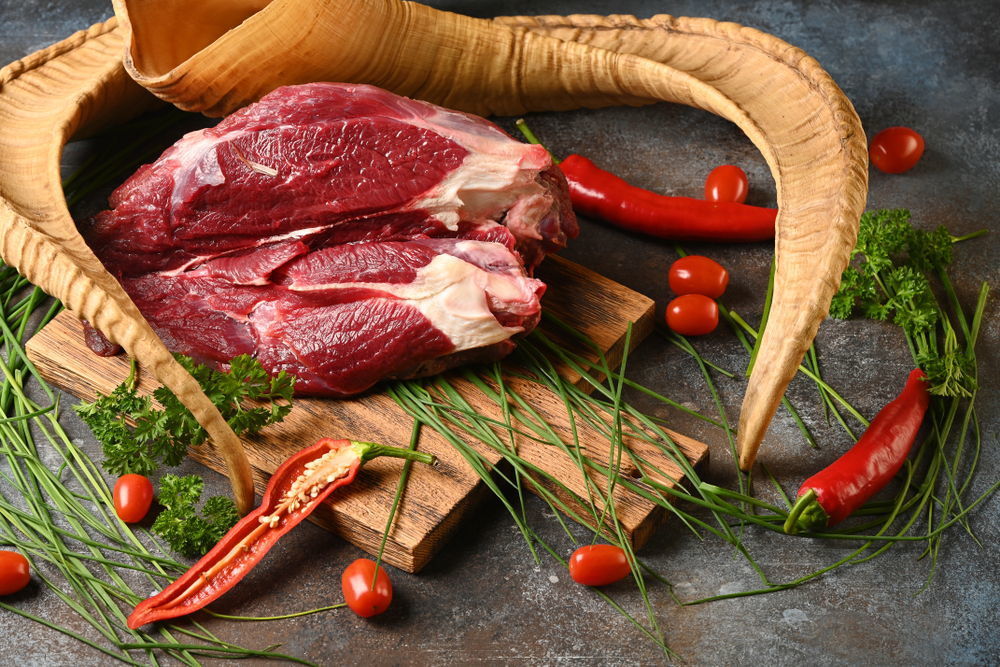Hunters, gather up! Because today we discuss the best way to hunt and cook deer.
With the help of many experts on venison, both hunters and chef, we’ve gathered up 8 crucial points that will make sure that you get the most out of your hunt.
Hunting a deer is a daunting task and it takes a lot of care to meet perfection. However, cooking venison not only requires patience and knowledge of the meat but also needs the right set of equipment.
So, without further ado, let’s get started!
1. The way you shoot is important
To get the most out of your hunt, you’ll have to shoot the animal with extreme care.
We say so not only because of the requirement of ethical killing as stated in deer hunting laws in the US, but the way you shoot the animal would also dictate the quality of the meat.
A gut-shot animal needs a lot of work. But if it happens, then here is what you should do. Keep the meat as separated from the debris as possible. Don’t let the meat mix up with the mess. Also, keep your hands and knife as clean as possible to avoid adverse cases of cross-contamination.
Wash the guts with cold water to rinse out all of the debris and finally finish it with a hot water wash to get rid of any bacterial infestation on the meat.
But yes try to keep the wound as clean and as away from the meat as possible. Shooting a deer is an art, so you need to get the practice to get the best quality meat.
2. Take the guts out in the right way
There’s no denying that taking the animal entrails out is crucial for acquiring delicious meat. And the common knowledge is to do it fast.
However, there’s no need to do the job in haste. A deer carcass takes about 4-5 hours to lose its warmth. And during this period the guts remain intact.
You can use this entire duration to collect the meat properly and there’s no need to rush because the meat won’t spoil or lose its taste for this duration.
So, the answer will be to take time to do it right but get to it right away, if possible. You have a generous window to get the right amount of meat from the deer.
>> How Much Does Deer Processing Cost? The Prices and What You Need to Know
3. Skin it like it’s an art
The skin of a deer is thick and it protects the deer from the harsh weathers. But when it dies you’ll need to cut it off as fast as possible to let the meat cool down.
Of course, doing it with patience is the most important part. The only thing you should not do is puncture the meat while trying to skin it, otherwise, it’ll become an orifice for bacterial infestation. Try your best to avoid getting the hair strands of its fur to come in contact with the meat.
But you are bound to commit errors on the journey of becoming a master. So, when the inevitable happens, just pick the hair up as fast as possible with your fingers or better, blow torch it.
4. Store it cool
The first goal of any hunter after a successful hunt is to get the meat and store it in a cool environment as quickly as possible.
An alive deer has a body temperature of about 101 degrees, and the ideal temperature for bacterial growth is from 70 to 100 degrees.
Conclusively, for the safety of the meat, you should get it to a cooler as soon as possible. Hence, carrying a portable cooler is a must for hunters. Moreover, it should be pre-cooled before the meat is put into it.
While you can use ice packs and cold water bottles to cool your container, it is often inefficient and can sometimes prove to be ideal for bacterial growth because of the moisture.
Therefore, we recommend you to get a portable dry cooler if you hunt regularly.
5. Age makes it better
Aging is arguably the most important thing you can do to make the meat have excellent taste.
While no hunter compromises on hunting, many get satisfied with mediocre aging. However, as a connoisseur of venison meat it should be unacceptable for you.
There are two kinds of aging that we’d recommend – dry and wet aging.
Both methods give the meat a distinct taste that is hard to articulate. But in both cases, the texture is splendid.
For dry aging, store the meat at a constant temperature of 34 to 37 degrees for 10 to 14 days. And for wet aging, let the meat get thawed and store it in vacuum-sealed status in similar conditions for up to 14 days.
6. The magic is in the slice
It may seem a challenging task to get the guts out correctly but when you’ll hunt a deer, you’ll realize it’s fairly intuitive.
There is no “right” way to slice the meat. The art is in the subjectivity of it.
But in any case, you have to keep your knife sharp and discard the meat around the wound at all cost!
If you have no experience in this, you can get started by our favorite way of consuming the meat. Our preferred way starts by consuming the inner loins and backstraps, then move on to the front and hind quarters, followed by neck meat, ribs, and the rest of the scrap meat.
We’d recommend you to not eat the fat of the carcass because it’s decent at best.
7. Smoke for flavor
Venison meat is particularly hard to get the flavors in. You can have your own methods of adding flavor to it as many chefs have distinct preferences.
But, according to us, the most authentic and the easiest way to enjoy venison is to let it smoke with the herbs and spices.
Not only it easily transfers the flavors to the meat but also gives the meat an extremely delicious texture and softness.
And, if you have already properly aged the meat, there is no way you are not gonna love it after it acquired the rich flavors of smoke.
8. Pack it right to win
There’s only a small chance that you’ll be able to finish all of the meat. So, inevitably, the meat will end up in a freezer.
When packing it, the goal should be to minimize its contact to air. Otherwise, the moisture of the meat will evaporate and it’ll develop freezer-burns. And while it is safe to eat freezer-burnt meat, the taste will not nearly be as enjoyable as normal venison meat.
But we know there are plenty of lovers of leftover foods and we understand why!
You’d find many hunters who prefer using vacuum sealers but if you ask us, we’d always recommend freezer papers. Not only because it is more economical but it is also better at preventing freezer burns.
>> How To Cook Deer Sausage: The Easy and Simple Guide You Need
Conclusion
So, that’ll be all for this piece.
We hope that these 8 tips helped you with mastering the art of hunting and cooking deer.
In conclusion, ensuring the safety of the meat is the most important of all. But try if you incorporate these points in your hunts and cooking, you’ll get the most out of the meat.
With that, thank you for reading and we wish you well on your adventure.

